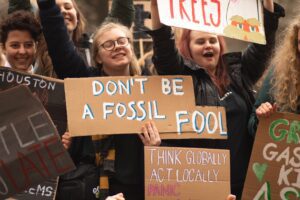After almost two years of intense negotiations, this week the European Parliament will give its final approval for the Climate Action Regulation, which aims to reduce emissions from transport, agriculture, buildings and waste management. Implementation will determine how effective this key climate law will be in helping Europe achieve its Paris climate goals.
Covering over 60% of the EU’s total greenhouse gas emissions, the Climate Action Regulation (also known as the Effort Sharing Regulation) sets annual emissions reduction targets for each EU Member State. The national reductions are supposed to deliver a union wide goal of 30% less emissions in 2030 compared to 2005 levels from sectors not covered by the EU’s carbon market.
The Climate Action Regulation sets the pace of decarbonisation in the sectors it covers, but its effectiveness as a climate instrument will depend on the policies adopted by each country. Now that the law will soon enter into force, the next step is for the Member States to develop National Energy and Climate Plans, in collaboration with stakeholders, to show how they plan to meet their climate commitments.
The transport, building, agriculture and waste sectors will need to undergo radical changes both in the short and longer term to meet the Paris climate goals. Crucial decisions must be taken in the next years, for example in relation to city planning, agricultural subsidies, public transport infrastructure, building renovations and waste collection that must set in motion the climate friendly transition.
Member States have the choice between investing in future-proof policies that enable this transition or delaying urgently needed action by using ‘flexibilities’ that have been built into the law. Some of the flexibilities (or ‘loopholes’) could end up weakening the overall impact of the Climate Action Regulation, as they allow countries to reach their targets on paper, but not in practice. These include the possibility to compensate for emissions by using credits from the oversupplied EU carbon market or from forest management.
Depending on the choices that countries make, the Climate Action Regulation could result in as little as 100 Mt CO2e emission cuts in the next decade (full use of loopholes) or deliver over 600 Mt CO2e emission cuts (no use of loopholes).
It is, therefore, in the hands of the EU governments, together with cities and regions, NGOs and others concerned, to unlock the full potential of the Climate Action Regulation in order to transform our societies. This will benefit not only the climate but also citizens, as we will get to enjoy cleaner air, more liveable cities, healthier food and warmer homes.
Last month, the EU leaders called on the European Commission to present an updated long-term climate strategy for Europe in line with the Paris climate goals. In order to limit global warming to 1.5 degrees Celsius, the EU must reach net-zero emissions by 2040. The Climate Action Regulation will play a major role in making it happen, and its implementation must be seen as part of this effort.
Resources
Policy brief: Understanding the Climate Action Regulation: How effective will the EU’s largest post-2020 climate tool be?
Policy brief and infographic: EU Climate Leader Board – Where countries stand on the Effort Sharing Regulation – Europe’s largest climate tool






